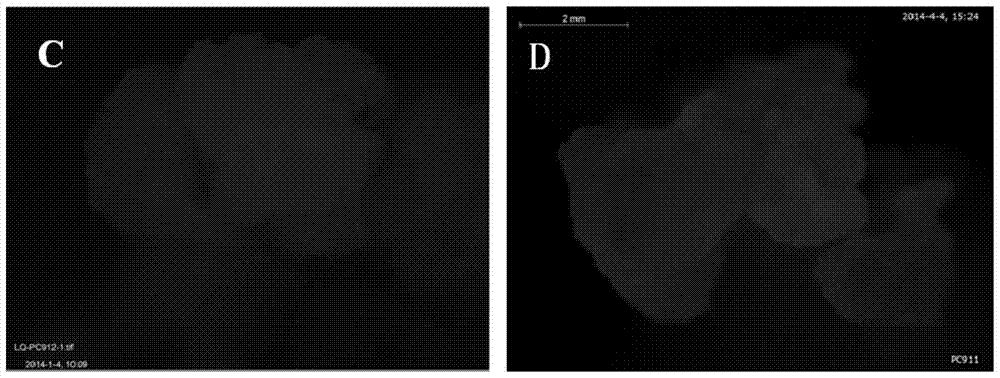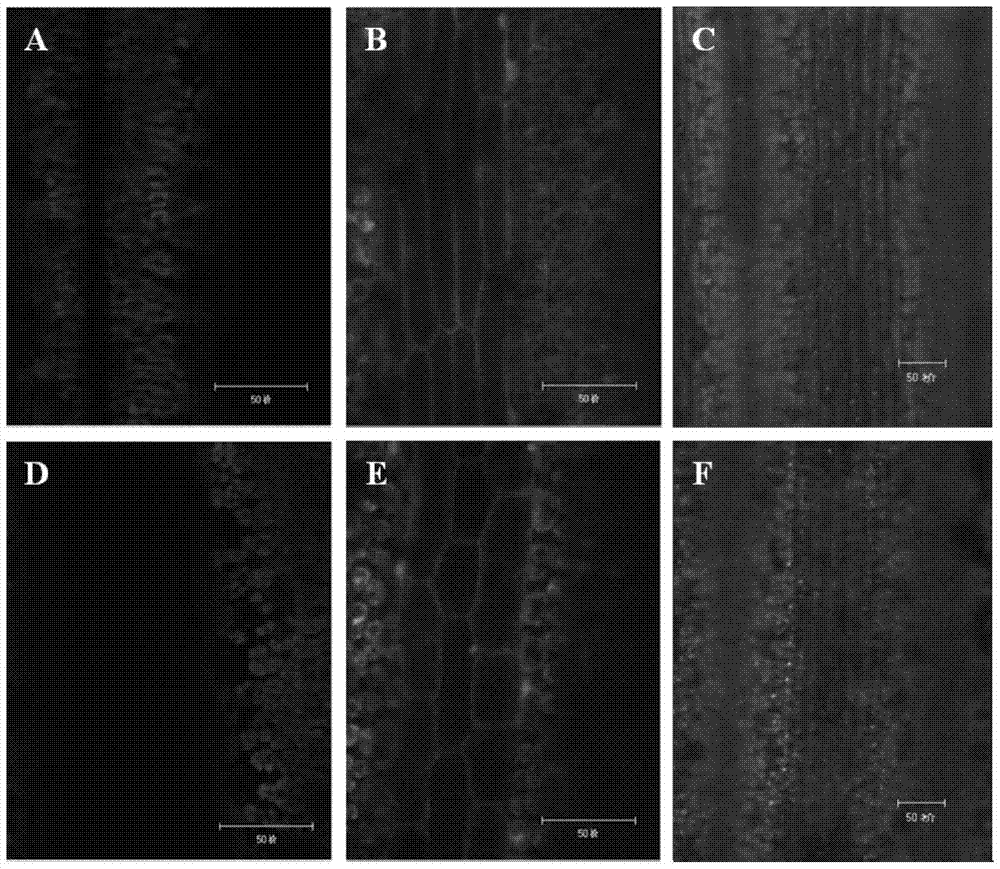A wheat promoter induced by rust fungus
A promoter, wheat technology, applied in the field of plant genetic engineering
- Summary
- Abstract
- Description
- Claims
- Application Information
AI Technical Summary
Problems solved by technology
Method used
Image
Examples
Embodiment 1
[0032] The cloning of embodiment 1 wheat GER4 gene promoter:
[0033] Using the coding sequence of the barley germin-like protein gene GER4c (GenBank: 418E01), in the Wheat Chinese Spring Genome Database ( http: / / www.cerealsdb.uk.net) to search for homologous sequences, and obtained a sequence spanning contig with a length of 1.4 kb through sequence splicing, which included two exons at the 5' end of the wheat GER homologous gene and its upstream sequence. Primers were designed according to the upstream sequence of the wheat homologous gene, and the sequences of StuI and SpeI restriction sites were added to the ends of the primers respectively. The forward primer sequence: 5'-AAAAGGCCTCTTTGCAGGCACTAACTTCATA-3', its nucleotide sequence is shown in SEQ ID NO:2 ; Reverse primer sequence: 5'-TTTACTAGTTGATTTCAGTCCTTTGGGTC-3', the nucleotide sequence of which is shown in SEQ ID NO:3.
[0034] PCR amplification uses Phusion high-fidelity enzyme (Thermo Scientific Company, Cat. No. ...
Embodiment 2
[0038] The construction of embodiment 2 plant expression vectors:
[0039] Cloning of introns:
[0040] Primers were designed according to the wheat WIR1 gene (GenBank: M95500), its intron fragment (151bp) was amplified, and Spe I and Hind III restriction sites were introduced at the ends, respectively. Forward primer sequence: 5'-TTTACTAGTGGAGCCACGGCCGTCCACG-3', its nucleotide sequence is shown in SEQ ID NO:4; reverse primer sequence: 5'-TTTAAGCTTTGCCTGGACGGGAAACCATGGA-3', its nucleotide sequence is shown in SEQ ID NO:5 shown.
[0041] Construction of intermediate vectors:
[0042] First, the wheat PTaGER4 gene promoter obtained in the previous step was double-digested with StuI and SpeI, and then cloned into the pUC-T vector (Kangwei Century Company, product number CW0802). Then, the recombinant plasmid was subjected to double digestion with SpeI and HindIII, and ligated with the restriction fragment of the WIR1 gene intron. Finally, the "promoter-intron" fragment was ob...
Embodiment 3 2
[0046] Embodiment 3 Genetic transformation and screening verification of Brachypodium distachyon
[0047] Genetic transformation of Brachypodium distachyon by Agrobacterium-mediated transformation. Take 2 μl of the carrier, and transform Agrobacterium strain AGL1 competent cells by electroporation. The Brachypodium callus was infected with the Agrobacterium solution with an OD value of 0.6, then placed on three layers of sterile filter paper, and cultured in the dark at 22°C for 3 days. Then put them on the induction medium containing hygromycin 40 mg / L for selection for 3 weeks, and subculture once in the middle, and the culture condition is dark culture at 28°C. If the callus is in a good state, it can be transferred to the regeneration medium (REM). The regeneration culture conditions are: light for 16 hours, darkness for 8 hours, and 28°C. When the young leaves grow to 1-2cm, they are transferred to a culture bottle containing rooting medium (MS) to make them take root. ...
PUM
 Login to View More
Login to View More Abstract
Description
Claims
Application Information
 Login to View More
Login to View More - R&D
- Intellectual Property
- Life Sciences
- Materials
- Tech Scout
- Unparalleled Data Quality
- Higher Quality Content
- 60% Fewer Hallucinations
Browse by: Latest US Patents, China's latest patents, Technical Efficacy Thesaurus, Application Domain, Technology Topic, Popular Technical Reports.
© 2025 PatSnap. All rights reserved.Legal|Privacy policy|Modern Slavery Act Transparency Statement|Sitemap|About US| Contact US: help@patsnap.com



